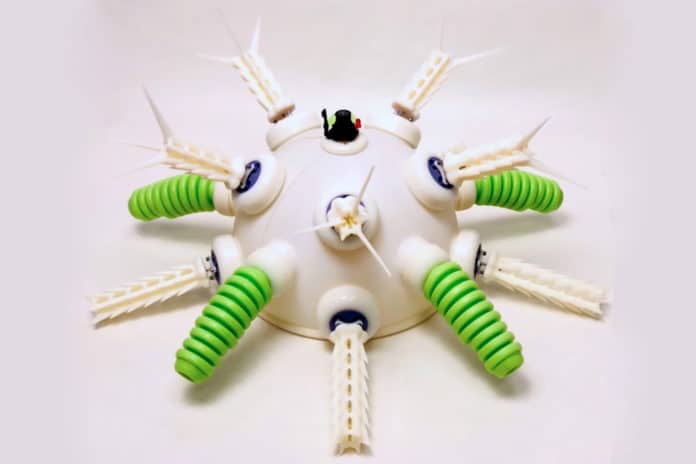We usually imagine the robot with a solid and resistant housing, capable of performing a series of movements. Now engineers are adapting the design inspiration from nature to robotics, such as sucker-like structures inspired by tube feet and a robotic adaptation of the sea urchin jaw.
During the International Conference on Robots and Intelligent Systems (IROS), engineers from Harvard presented UrchinBot, a robot inspired by a sea urchin. The idea is to bring the sea urchin mobility system to robotics for those cases in which mobility functions under the sea have to be performed.
Juvenile sea urchins have been chosen since they have a simpler body than that of adults, despite having the same basic features, and therefore easier to replicate in robotics.
This weirdest looking robot “incorporates anatomical features unique to sea urchins,” actuated by pneumatics or hydraulics and operating without a tether. It is served as a testbed to help researchers identify physical characteristics and control techniques that could lead to new types of more versatile and effective underwater robots.
Special interest has been paid to accurately replicate the geometry and ranges of movement of anatomical features. Therefore, the two types of sea urchin appendages have been replicated – movable spines, and sticky tube feet. UrchinBot’s body has five flexible feet (green structures) and ten rigid moving spines. These appendages are driven by actuators inside the robot body to allow it to drag in a specific direction or rotate.
All domes are interconnected inside the robot, so that the spines cannot be operated separately, generating symmetrical rotation movements. Real urchins excrete sticky stuff that they use to glue themselves to surfaces and then excrete an enzyme that dissolves the glue when they want to move. This has been replaced by a system of extensible and retractable magnets.
The rest of the body has pumps, valves, and electronic devices that allow it to move autonomously under the sea.
The researchers point out that UrchinBot will not be fast enough to move under the sea, which is expected with most bioinspired robots. Top speed is 6 mm/s, or 0.027 body lengths per second, quite a bit slower than a juvenile urchin but only half as fast as an adult urchin.
Researchers claim that it could be useful for underwater cleaning and inspection applications, especially in situations where heavy inlays would be a challenge for more conventional robots.
